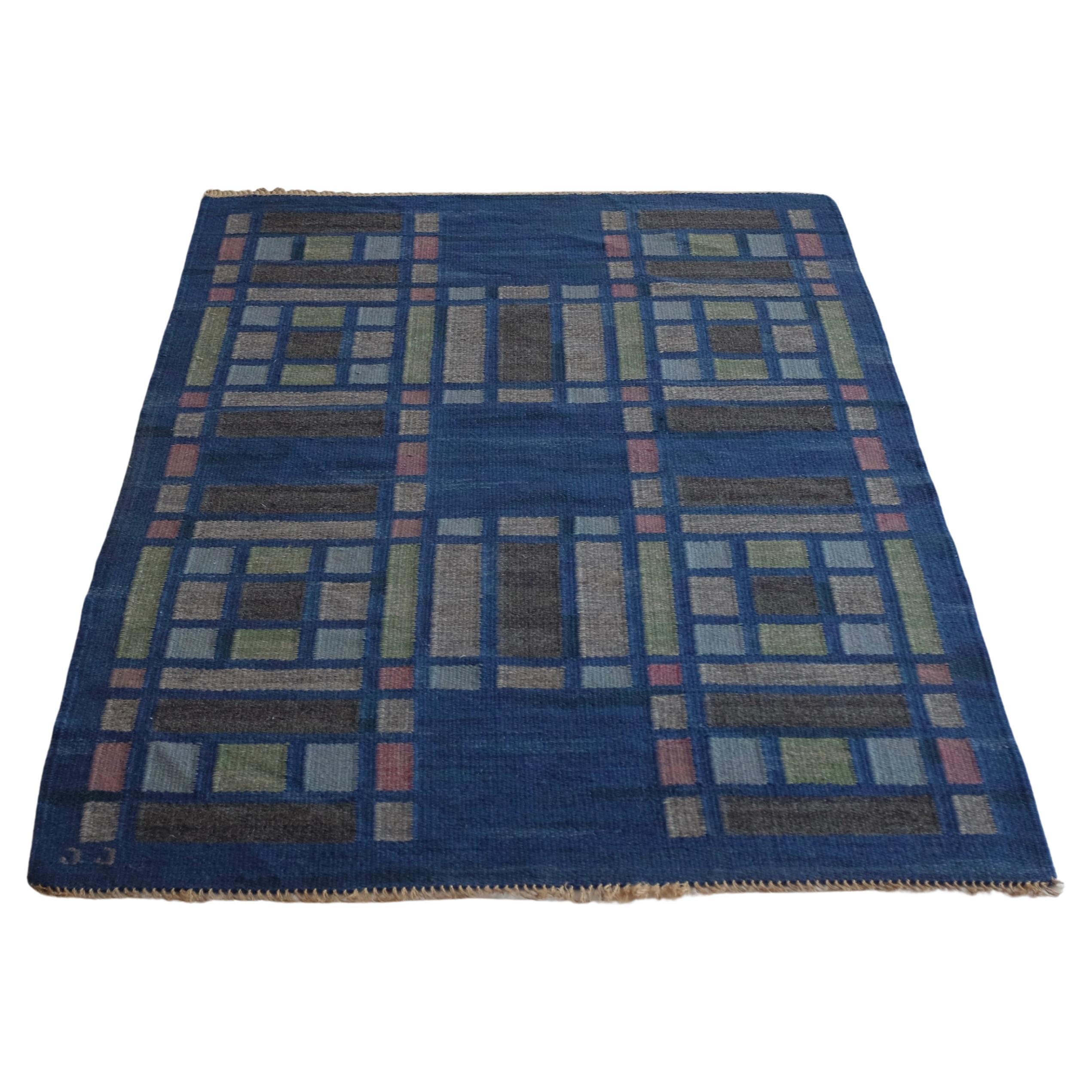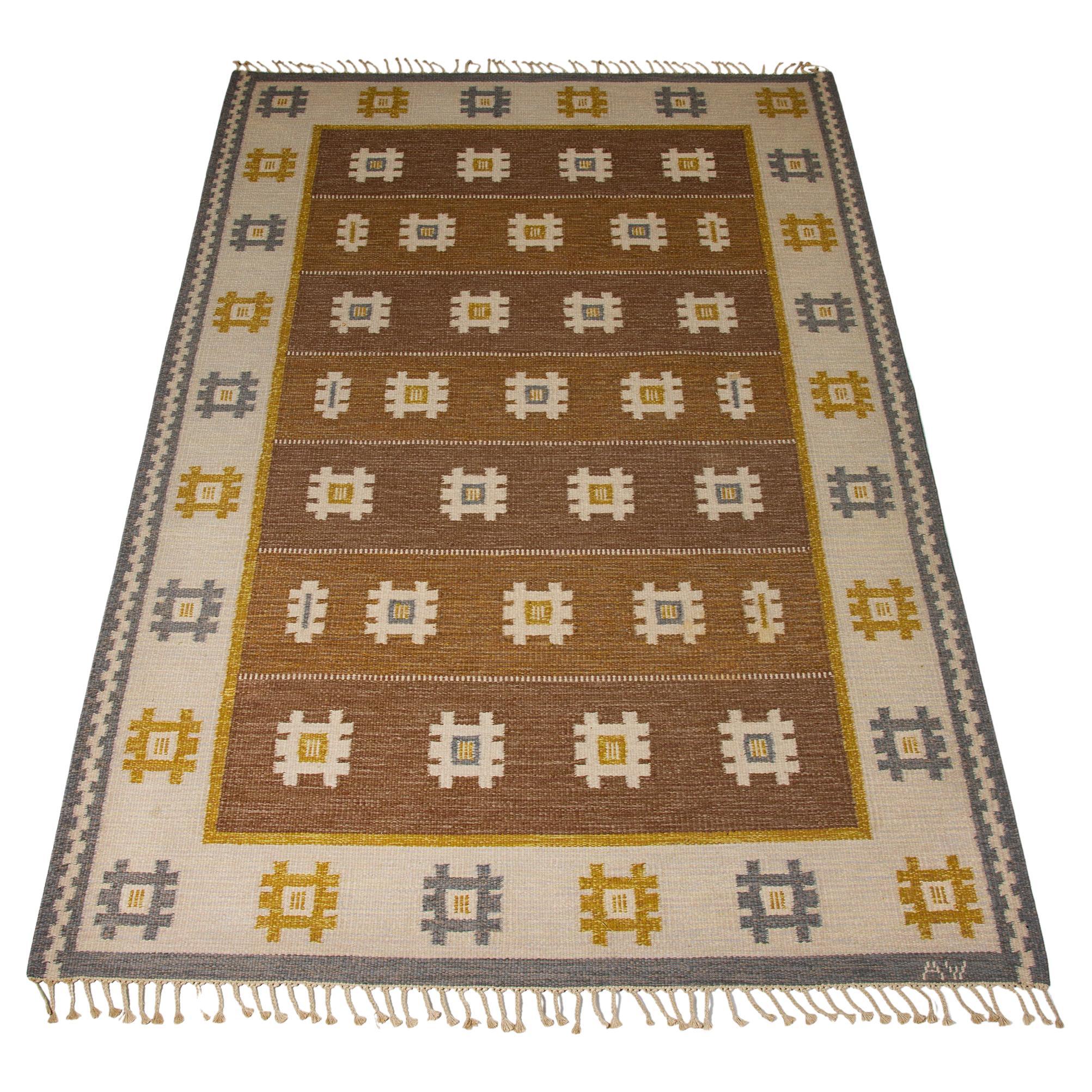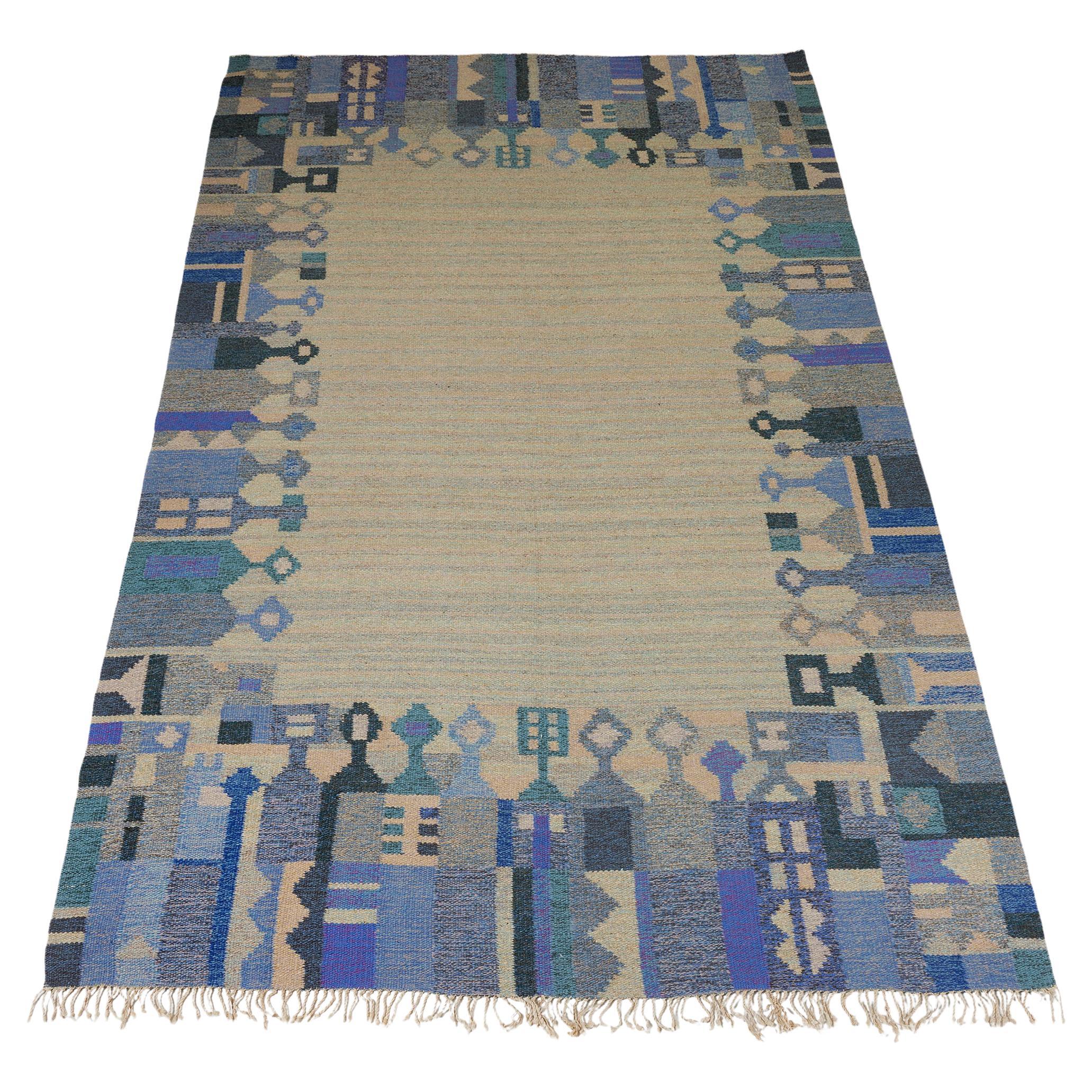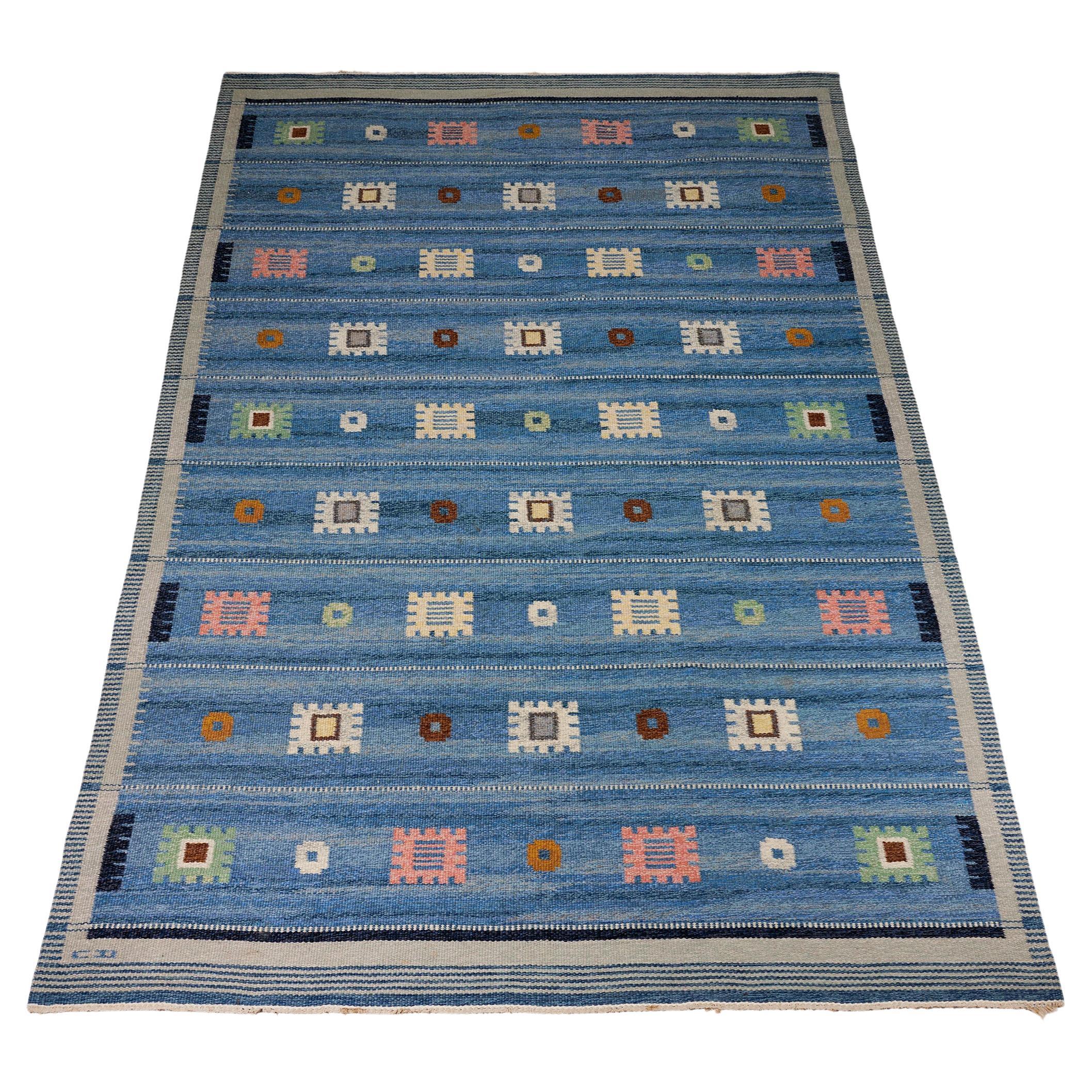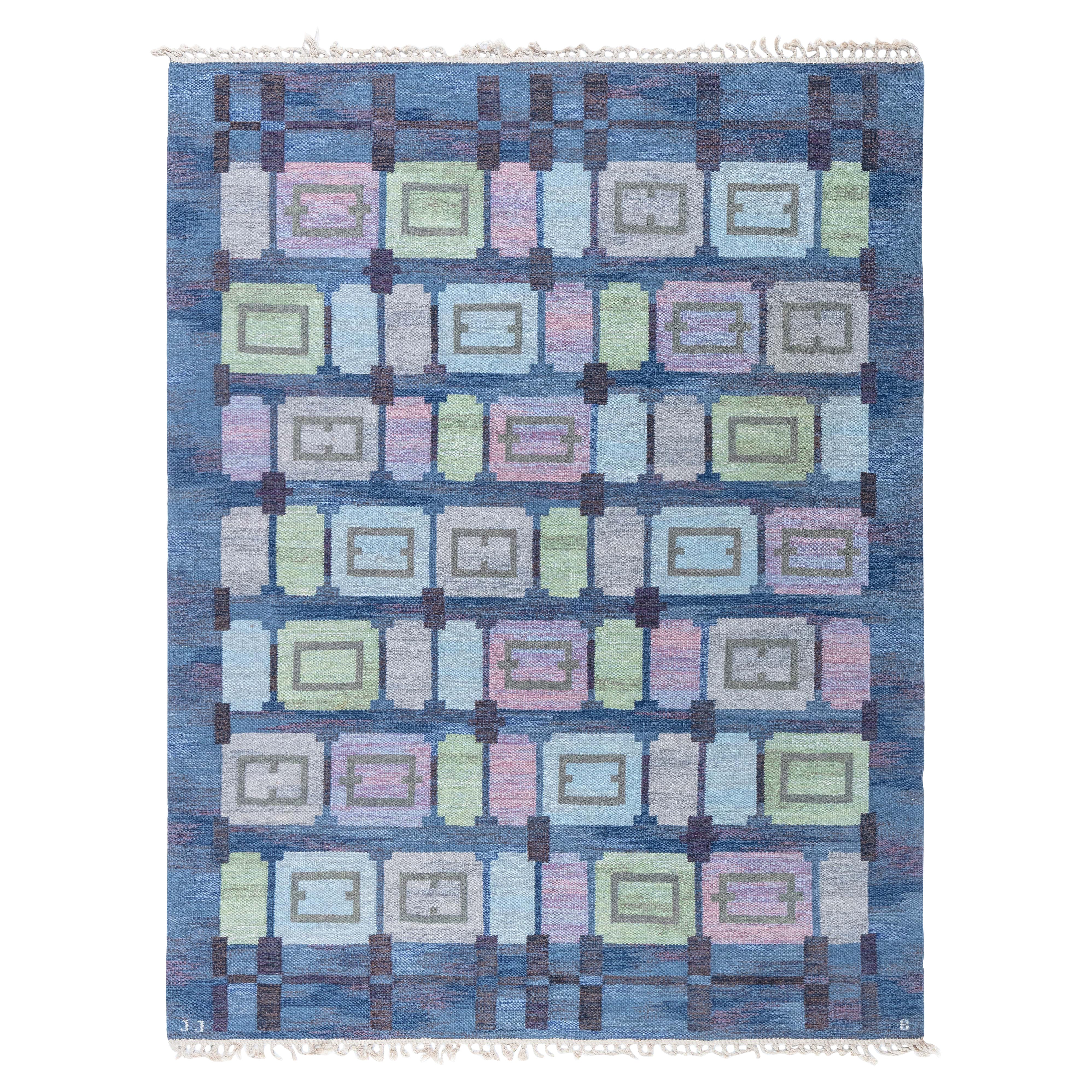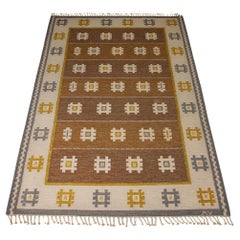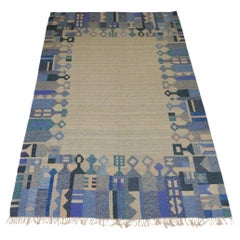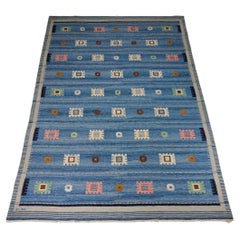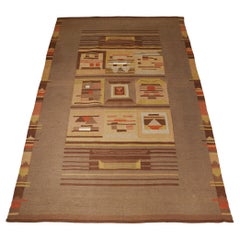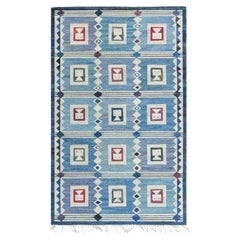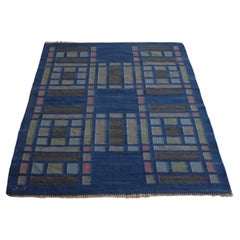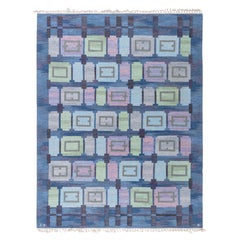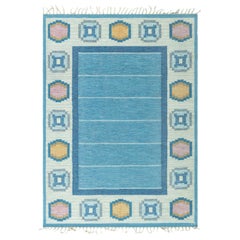Items Similar to Rug 'Girls in the window' designed by Edna Martin, 1950s
Want more images or videos?
Request additional images or videos from the seller
1 of 8
Rug 'Girls in the window' designed by Edna Martin, 1950s
$12,632.54
£9,338.22
€10,550
CA$17,181.12
A$19,251.35
CHF 10,021.06
MX$235,510.68
NOK 127,198.83
SEK 120,137.77
DKK 80,333.07
Shipping
Retrieving quote...The 1stDibs Promise:
Authenticity Guarantee,
Money-Back Guarantee,
24-Hour Cancellation
About the Item
Rug ‘Flickorna i fönstret’ designed by Edna Martin.
L: 254 cm / 8' 4"
W: 202 cm / 6' 7 1/2"
- Creator:Edna Martin (Maker)
- Dimensions:Width: 79.53 in (202 cm)Length: 100.01 in (254 cm)
- Materials and Techniques:
- Period:
- Date of Manufacture:1950s
- Condition:
- Seller Location:Stockholm, SE
- Reference Number:1stDibs: LU1006642793212
About the Seller
5.0
Recognized Seller
These prestigious sellers are industry leaders and represent the highest echelon for item quality and design.
Gold Seller
Premium sellers maintaining a 4.3+ rating and 24-hour response times
Established in 1998
1stDibs seller since 2013
202 sales on 1stDibs
Typical response time: <1 hour
- ShippingRetrieving quote...Shipping from: Stockholm, Sweden
- Return Policy
Authenticity Guarantee
In the unlikely event there’s an issue with an item’s authenticity, contact us within 1 year for a full refund. DetailsMoney-Back Guarantee
If your item is not as described, is damaged in transit, or does not arrive, contact us within 7 days for a full refund. Details24-Hour Cancellation
You have a 24-hour grace period in which to reconsider your purchase, with no questions asked.Vetted Professional Sellers
Our world-class sellers must adhere to strict standards for service and quality, maintaining the integrity of our listings.Price-Match Guarantee
If you find that a seller listed the same item for a lower price elsewhere, we’ll match it.Trusted Global Delivery
Our best-in-class carrier network provides specialized shipping options worldwide, including custom delivery.More From This Seller
View AllRug by Alice Wallebäck, Sweden, 1950s
By Alice Wallebäck
Located in Stockholm, SE
Rug by Alice Wallebäck, Sweden, 1950s.
Wool.
L: 200 cm / 6' 6 3/4"
H: 314 cm / 10' 3 5/8"
H with fringes: 328 cm / 10' 9 1/8"
Category
Vintage 1950s Swedish Russian and Scandinavian Rugs
Materials
Wool
Rectangular Blue Swedish Rug by Gammelstads Handväveri, 1950s
Located in Stockholm, SE
Rug, anonymous for Gammelstads Handväveri,
Sweden, 1950s.
Wool.
Measures : L: 313 cm
Length including the tassels: 322 cm
W: 193 cm.
Category
Mid-20th Century Swedish Mid-Century Modern Russian and Scandinavian Rugs
Materials
Wool
Rug Designed by Carl Dangel, Rölakan Flatweave Technique, Sweden, 1950s
By Carl Dangel
Located in Stockholm, SE
Rug designed by Carl Dangel,
Sweden, 1950s.
Handwoven wool carpet in Rölakan flatweave technique.
Signed.
Dimensions:
L: 304 cm / 9’ 11 3/4’’
W: ...
Category
Vintage 1950s Mid-Century Modern Russian and Scandinavian Rugs
Materials
Wool
Rug, Designed by Impi Sotavalta, Flat weave rug, Finland, 1930s
By Impi Sotavalta
Located in Stockholm, SE
Rug, designed by Impi Sotavalta,
Finland, 1930s.
Flat weave rug.
Dimensions:
L: 299 cm / 9’ 9 1/4’’
W: 190 cm / 6’ 2 3/4’’
Category
Early 20th Century Swedish Mid-Century Modern Russian and Scandinavian Rugs
Materials
Fabric
Rug designed by Anna-Greta Sjöqvist, Sweden, 1950s.
By Anna-Greta Sjöqvist
Located in Stockholm, SE
Rug designed by Anna-Greta Sjöqvist,
Sweden. 1950s.
Pure wool.
Kelim technique.
Measurements:
L: 244 cm/ 8''
W: 180 cm/ 5' 11''
Category
Vintage 1950s Swedish Scandinavian Modern Russian and Scandinavian Rugs
Materials
Wool
Rug ‘Dukater’ Designed by Märta Måås-fjetterström, Sweden, 1924
By Märta Måås-Fjetterström
Located in Stockholm, SE
Rug ‘Dukater’ designed by Märta Måås-Fjetterström,
Sweden, 1924.
Wool.
Signed MMF.
Measurements:
L: 347 cm
Length including the tassels: 365 cm
W: 265 cm.
Märta Måås-Fjetterstr...
Category
Mid-20th Century Swedish Mid-Century Modern Russian and Scandinavian Rugs
Materials
Wool
You May Also Like
Vintage Swedish Flat Weave Rug “The Girls in the Window” Designed by Edna Martin
By Edna Martin
Located in New York, NY
Vintage Swedish Flat Weave Rug “The Girls in the Window” Designed by Edna Martin
Size: 5'1" × 8'2" (154 × 248 cm)
This enchanting vintage Swedish flat-weave rug, titled “The Girls in...
Category
Mid-20th Century Scandinavian Mid-Century Modern Russian and Scandinavia...
Materials
Wool
Swedish Mid-century rug "Kärrmark" by Judith Johansson
By Judith Johansson
Located in New York, NY
Swedish Mid-Century Rug called Kärrmark by Judith Johansson. Designed in 1955 and featuring a blue background with a kaleidoscope design in green, pink and purple shades. Judith Joha...
Category
Vintage 1950s Swedish Mid-Century Modern Western European Rugs
Materials
Wool
Doris Leslie Blau Vintage Swedish Rug by Judith Johansson Spise Hall
By Judith Johansson
Located in New York, NY
Vintage Swedish Rug by Judith Johansson Spise Hall
Size: 6'10" × 9'0" (208 × 274 cm)
The Vintage Swedish Flat-Weave Rug known as "Spise Hall," designed by the esteemed Judith Johans...
Category
Mid-20th Century Scandinavian Mid-Century Modern Russian and Scandinavia...
Materials
Wool
Doris Leslie Blau Vintage Swedish Flat Woven Rug by Ingegerd Silow
By Ingegerd Silow
Located in New York, NY
Vintage Swedish Blue Flat Woven rug by Ingegerd Silow
Size: 5'6" × 7'5" (167 × 226 cm)
A striking example of Scandinavian modernist textile artistry, this vintage Swedish flat-weave ...
Category
Mid-20th Century Scandinavian Mid-Century Modern Russian and Scandinavia...
Materials
Wool
Doris Leslie Blau Vintage Swedish Flat Woven Rug
Located in New York, NY
Vintage Swedish flat woven rug
Size: 5'1" × 8'0" (154 × 243 cm)
A mid-century vintage Swedish flat-weave rug, handwoven in the 1950s, exemplifying the clean lines and soft color harm...
Category
Mid-20th Century Scandinavian Mid-Century Modern Russian and Scandinavia...
Materials
Wool
“Strålar Gul” Vintage Swedish Flat-Weave Rug by Marianne Richter c. 1950s
By Marianne Richter
Located in New York, NY
“Strålar Gul” Vintage Swedish Flat-Weave Rug by Marianne Richter c. 1950s
Size: 6'9" × 10'0" (205 × 304 cm)
A bold testament to mid-century Scandinavian textile artistry, this rare v...
Category
Mid-20th Century Scandinavian Mid-Century Modern Russian and Scandinavia...
Materials
Wool
More Ways To Browse
Antique Silver Flatware Sets
Hand Chased Silver
Metal Bucket
Silver Place Settings
Southern Table
Tufted Leather Chair
Turned Leg Desk
1950s Italian Sofa
Antique Dining Table With Drawers
Coffee Cups And Saucers
Danish Teak Side Table
Dining Tables With Lions
Handmade Wood Stool
Wood And Leather Ottoman
1950s Square Table
1960s Leather Sofa
1970 Round Glass Table
Antique Book Tables

